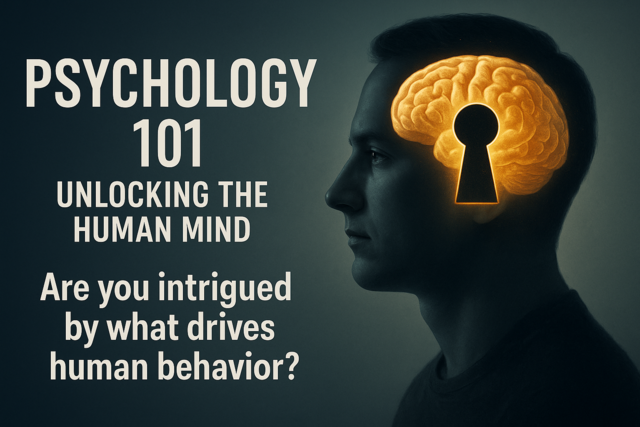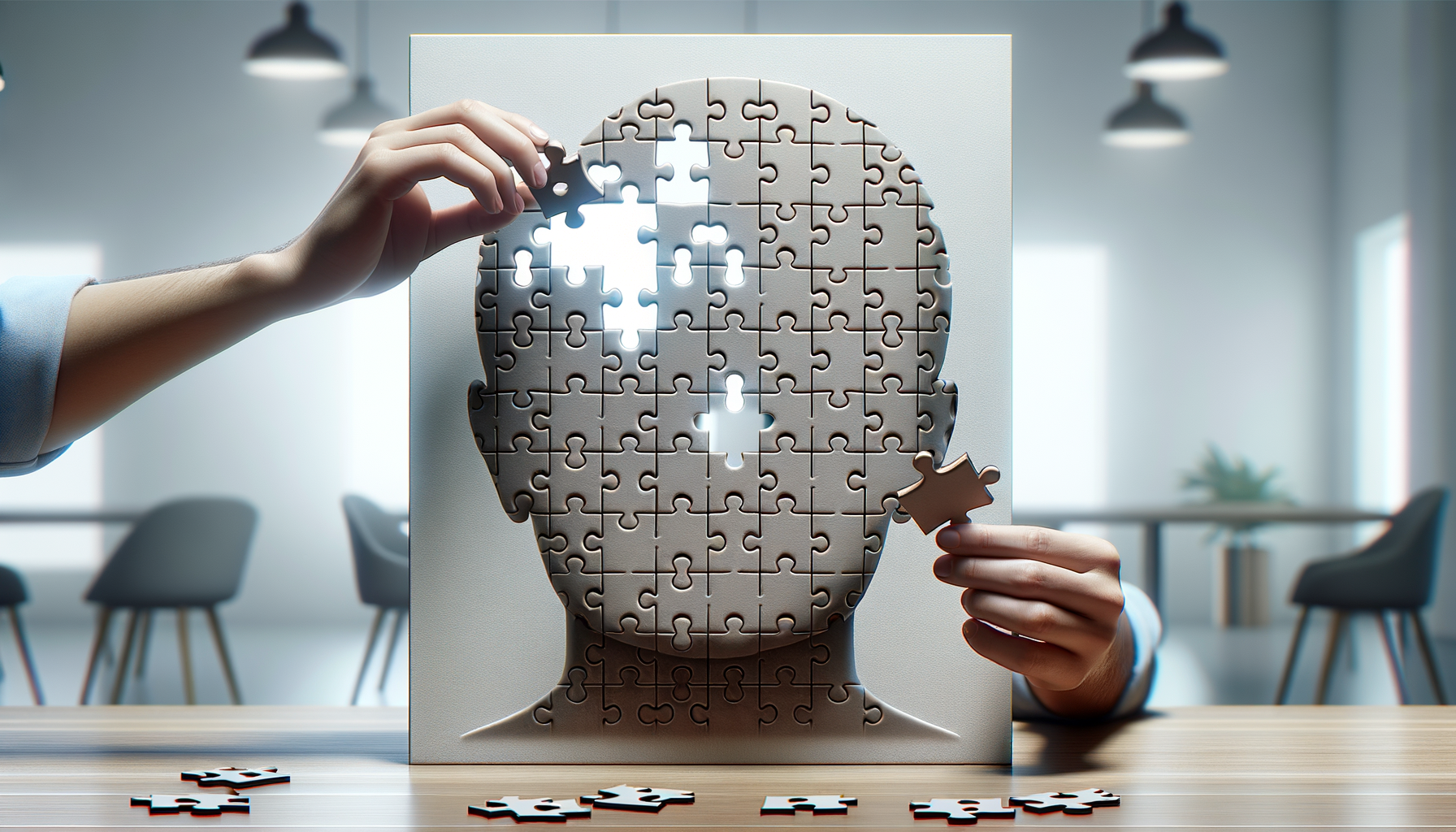It wasn't until around the middle of the 20th century that a name was given to this disorder that now affects approximately one in 88 children � with some studies claiming it is one in every 50 children!
Strangely, autism was once considered a rarity, although it certainly wasn't. It simply just didn't have a name or label of any kind.
Recent research reveals that there are currently several million people affected in the United States alone � which can be considered nothing short of an epidemic!
Even though early diagnosis and treatment are the two most important factors in really improving the life of a person with autism -- unfortunately, far too often parents allow themselves to become bogged down in denial and confusion.
If the life of an autistic child is to be radically improved, parents (and others) must be prepared to take the necessary steps � to look, listen, and actively seek help, and to keep looking until such time as they find that particular treatment method, or methods, that suit their child. There is no "one suits all" cure.
Although currently autism spectrum disorders are usually detected between the ages of 18 months and 3 years, it is felt that ultimately children as young as age 1 may be able to be accurately diagnosed.
| TIP: Be extremely careful about naming the diagnosis "autism" with your insurance company. Many have been known to refuse to pay for crucial treatments (e.g. speech therapy) when they realize that the treatments will most likely be on-going, long term. Many parents use the diagnosis of developmental delay instead with their insurance. companies. |
| A little more detail |
Autism is a complex disorder of the central nervous system and has three central spokes/features to its hub:
1. Problems with social interaction
2. Impaired verbal and non-verbal communication
3. Patterns of repetitive behavior with restricted interests
Who notices first?
| ASD can also appear in children who, on the surface, seem to be developing completely normally. Naturally, if a young toddler, who was previously happy and babbling along, suddenly turns into one who is overly quiet, withdrawn, and seemingly avoids social contact (where previously they either welcomed or initiated it) � there is something very wrong. This must be followed up as soon as possible. |
Although there may very well be concerns about labeling a child as being ASD, frankly the earlier the diagnosis is made, the earlier interventions and treatment can commence.
A parent should never hesitate in following through on their doubts, as research has shown that parents are nearly always correct about observing any developmental problem with their child. They can't, of course, always pinpoint the nature of the problem � what it is, or it's depth � but they know that all is not right.
Those often troublesome adolescent years � for the autistic teenager
More often than not a time of confusion, angst, and stress, adolescence is certainly no less so for the autistic teenager (or their parents).
Like all teenagers, they will need advice and guidance in coping with their changing sexuality, and while some autistic behaviors improve during those adolescent years, some get worse. Aggression is likely to be one area that worsens due to the child's need to express themselves during their teenage years.
| Social Indicators |
Let's face it: The typical baby or infant is a very social being, with cooing, gazing at people, grabbing fingers, turning to and looking at voices, and even smiling.
| Keeping a notebook |
A lot of parents and other family members will feel inadequate after a diagnosis when they are not sure how to best assist with the child. There are so many treatment options and aids available, that it's not surprising that people aren't sure what to do and when.
Keep a notebook of anything, and everything, along the way (treatment options, contacts, general ideas) that you feel might be in the least helpful. In that way, you will have a foolproof way of recalling whatever helpful information you have collected.
So what sort of things do you collect, write down or keep a record of? Everything from doctors' reports, your child's evaluation (documents eligibility for special programs), treatment ideas and methods you have come across, medications, diet � the list goes on and on.
Better to have too much than too little!
| Treatment Options |
The only factor that most professionals agree on, is the importance of early intervention. So gathering as much information as possible about the many and varied options available, such as learning as much as you can about each one, and how they may assist your particular child, is bound to be of some assistance at some time during his/her treatment.
| "Autism is not a modern problem, even though it has only recently gained vast recognition. It is difficult to discuss the history of autism treatment without paying particular attention to the history of autism as a concept ,and the ways in which autism has been conceptualized and theorized about over the past 100 years." Robert Williams, Jr. |
So what was autism called in those days before it got its present name? Most probably people who were autistic were lumped together either with the mentally retarded, or the insane. We would expect, though, to have enough detailed descriptions of such people to enable us to see a pattern suggesting autism amongst them. Such is not the case, however. Very few possible illustrations of symptoms of autism remain from history that might suggest the disorder.
| Early 1800s |
There was also the case of the so-called wild boy of Aveyron, found in the 19th century, and named Victor. For those interested, the story is recorded in full in the book The Wild Boy of Aveyron, including the details of his subsequent education by a Dr. Itard.
It was assumed that Victor had grown up in the forest without any form of human contact, as he never spoke, and would only gesture if he wanted something, pulling someone by the arm to gain their attention. Victor became unhappy if items were not always in the same place, and extremely upset if the object was moved.
Language and history are part and parcel of each other, inter-connected, with one weaving in and out of the other.
Many experts believe that the language and speech problems of autism are caused by a variety of conditions that occur either before, during, or soon after birth, such as conditions that affect the brain's development. To be completely accurate though, the precise cause of language and speech problems in autism is unknown. There are many theories, but no 100 percent definite answers.
The "language" of autism is fascinating when considered from both viewpoints, that is, of both the autistic and non-autistic person. Speak to any autistic person and he/she will most probably tell you that they think non-autistic language is inefficient, redundant, illogical and irrational, and so on. Whereas to the non-autistic person, autistic language tends to sound technical, stilted, monotonous, long-winded, and repetitive.
Of course language differences are not just limited to the non-autistic trying to understand the language of the autistic person and vice-versa, as nearly all groups have difficulties at times simply understanding their own words and meanings, let alone anyone else's.
We all need to arrive at an understanding of the language of others. It really does come down to a particular group's different internal models or ideas about communicating with each other. You only have to take a look at how many times people get their words and meanings confused in everyday conversation
| Understanding |
| 1940s, 1950s and 1960s |
Drs. Kanner and Asperger -- In 1943, Dr. Leon Kanner, of Johns Hopkins University, described autism for the first time in his paper, Autistic Disturbances of Affective Contact (published in the Journal Nervous Child).
In describing this particular child and others, Dr Kanner used the world "autism," coming from the Greek word "auto," meaning "self." Even in those very early days, Dr Kanner emphasized the role biology played in autism, stating, "The children's aloneness from the beginning of life makes it difficult to attribute the whole picture exclusively to early parental relations. We must assume that these children have come into the world with the innate inability to form the usual contact with people."
Regretfully, during the 1940s to as late as the 1960s, the medical community felt that children who had autism were schizophrenic. This may in part have been linked to the use of the word �autism' earlier on with childhood schizophrenia. Please firmly implant the fact in your mind that autism and childhood schizophrenia are very definitely two different disorders.
Unfortunately, the above lack of understanding led, in many cases, to parents believing that they were actually at fault in some way. Parents are not at fault for their child's autism! Fortunately, the 1960s brought much better understanding about autism, and there began to be a much more precise identification of the symptoms of the condition.
At the very same time that Dr. Kanner was conducting his studies on children, the Viennese-born Dr. Hans Asperger was studying approximately 200 families with children similar to those Kanner was working with � with one exception: The children Dr Asperger was working with, didn't have the language delays displayed by the other children.
Although Asperger published an article in German in 1944, it wasn't translated until as late as 1989. Yet the term "Asperger's Syndrome" was actually used in 1981 by a British psychiatrist.
Dr. Bruno Bettelheim -- It is tragic, to say the least, that the understanding of autism took a very big backward step through the work of Bruno Bettelheim, with his theory that children became autistic due to cold and emotionally distant mothers (Bettelheim actually referred to them as "refrigerator mothers"). This theory is simply untrue.
Bernard Rimland -- This psychologist was also the father of a child with autism. Due to his personal involvement and professional knowledge, he was well equipped to reputably target Bettelheim's "refrigerator mother" theory � publishing in 1964 "Infantile Autism �" which marked a turn toward our present understanding that autism is a neurological disorder, and is biologically based.
Ole Ivar Lovaas -- This clinical psychologist is considered the father of applied behavior analysis therapy, as applied to autism, (mostly through his development of the Lovaas technique).
| How were autistic people treated in the past? |
Autistic savants** were often displayed in freak shows, whereas non-savant autistics were mostly locked away in mental hospitals throughout the 19th century and the first half of the 20th century. Most would have been drugged-up, because authorities simply didn't know what to do with them � but then this applied to most mentally ill people.
People with autism are no different than anyone else, in that each is unique and subsequently, displays the symptoms of autism in his or her own way.
Generalizations about the disorder are rarely accurate, and myths and misconceptions abound. For instance, there is a relatively common belief that those with autism never express emotion, smile, laugh, or display affection � This is incorrect.
Just like snowflakes, no two individual's symptoms signifying autism are the same, with some symptoms even being displayed by people who aren't autistic.
Everyone needs to remember, though, that people with ASDs have impairments with social, emotional, and communication skills � sometimes serious ones. They might repeat certain behaviors again and again, and will have trouble changing their daily routine.
| Understanding |
Important steps to be taken for that initial screening
� Watch and examine for early onset of symptoms.
� Watch for regression.
� A team approach should be created between the parents and the professionals involved with the child.
� The parents must be provided with the training and education they need, so they will know what steps have to be taken.
The Behavioral Pediatrician, Pediatric Neurologist or Pediatrician needs to set up referrals for:
� Psychological Evaluation
� Vision Evaluation
� Audiological Evaluation-Auditory Evoked Potential assessment (done if needed)
� Speech and Language Evaluation
� Occupational Therapy/Sensory Integration Evaluation
� Physical Therapy Evaluation if needed
The Pediatrician needs to set up referrals for:
� Complete Blood Work
� Complete Metabolic Work Up
� Chromosome Study -- To Rule Out Fragile X
A referral to Pediatric Neurologist for:
� Baseline EEG
� 24 Hour EEG
Follow-up meetings are held when relevant.
| Attention Deficit |
A diagnosis of this sort can most certainly confuse, frustrate and really worry parents who are often bewildered about the links between the two disorders and which disorder their child has (or does he/she have both?).
Children with autism often display signs of hyperactivity and lack of attention on starting school, and this is the main reason for the two conditions becoming confused in very young children.
Children with just AD/HD are unlikely to become calmer with age (unless they are medicated), but they will develop social and communication skills that the autistic child normally will not.
A child with autism can display signs of AD/HD as well as the symptoms of autism, but the additional diagnosis of AD/HD should not be considered until their needs with regard to autism are addressed first.
| Abnormal functioning in three foundational areas of growth and development |
As mentioned previously, each autistic is an individual, and each and every case must be treated individually. However, the main signs of autism fall into three key areas. These areas are:
-
Communication � including speaking and non-verbal communication such as eye contact, facial expressions, and body language.
-
Social Behaviors � autistics generally have difficulty expressing emotions, exhibiting empathy, and conversing with others.
-
Behavior Toward Items and Habits � autistics generally repeat certain phrases or strings of numbers, insist on following certain very narrow routines, play in a very repetitive way, and insist on rigid patterning of objects.
| Combinations of behavior patterns |
It is a good idea to remember that autism is distinguished by a pattern of symptoms rather than just one single symptom or pattern.
| Questions to ask your health professionals |
Anyone will obviously have additional questions to the sample questions below; they are only meant as a start:
� What can we do to help our child right away?
Your doctor will no doubt speak about specific procedures and therapies, but you should ask what you can do immediately to improve your child's general health and function.
� What should parents tell their child about the disorder?
Depending on the age of the child they may not be able to understand much, if anything at all, at the beginning. Children do need to participate in their treatment so you need to tell them something. If there is any doubt, ask advice of the doctor or the parents of other autistic children.
� Are there any support groups in my area?
If your doctor is not sure, do a simple search on the Internet.
� What other support services (e.g. therapy, respite, specialists, etc.) are there in the area?
Always ask for a list of these even if you don't use them straight away � the odds are you will at some later time.
� What is our next step?
Don't be put off by a health professional with a "warm and fuzzy" "Don't worry about it now" approach. Ask questions about your child's treatment.
� Is there anything else I should know that I haven't asked you? Your doctor and other health professionals probably have had this conversation many many times (possibly hundreds or even thousands) but you haven't, so ask!
| Things to be ruled out |
Because there is no precise diagnosis for autism, sometimes other conditions and disorders enter the diagnostic mix. Related conditions to autism would include: Rett disorder, childhood disintegrative disorder, Asperger disorder, pervasive development disorder, hearing loss, and metabolic disorders. These need to be considered and ruled in or out.
In order to rule out (or alternatively rule-in) any disorders, a number of diagnostic tests should be used, ranging from blood tests to determine eventual disorders in the blood lipids or amino-acids and other metabolism-linked conditions, to DNA and chromosomal analyses to rule out any genetic diseases. Hearing tests are utilized to discover any possible connections between language difficulties and deafness.
| Diagnosis on behavior |
An autism diagnosis is based on behavior � not on cause or mechanism.
Autism is defined in the DSM-IV-TR (Diagnostic & Statistical Manual of Mental Disorders � the handbook for mental health professionals, which lists different categories of mental disorders and their criteria), as exhibiting at least six symptoms total, including at least two symptoms of qualitative impairment in social interaction, at least one in communication and at least one symptom of restricted and repetitive behavior.
| Improvement over time? |
More things improve over time than don't, and autism is no exception.
| Autism is an Enigma |
The exact cause/s of autism have always been a mystery � many causes have been proposed, but the theory of its causation is still very much incomplete.
While genetics accounts for about 90 percent of the risk of a child developing autism, the genetics of autism are complex, and it is unclear exactly which genes are involved and responsible.

























